Determining the average lifespan of spiders can be difficult as its not easy to keep track of a specific specimen unless they’re held in captivity. For this reason, every spider on this list is a larger spider species, such as tarantulas and trapdoor spiders. More is known about the longevity of tarantulas than other types of spiders because they are fairly popular pets.
In the case of the one trapdoor spider species on this list, its age was tracked because an arachnologist dedicated her life to studying specific individuals in the wild. For all of these spiders, only the females have a long lifespan, while the males tend to have their lives cut short after mating.
7. Chilean Rose Tarantula
Average Lifespan: Females – 15 to 20+ years; Males – 3 to 10 years
County of Origin: Parts of Chile, Bolivia, and Argentina
Scientific Name: Grammostola rosea
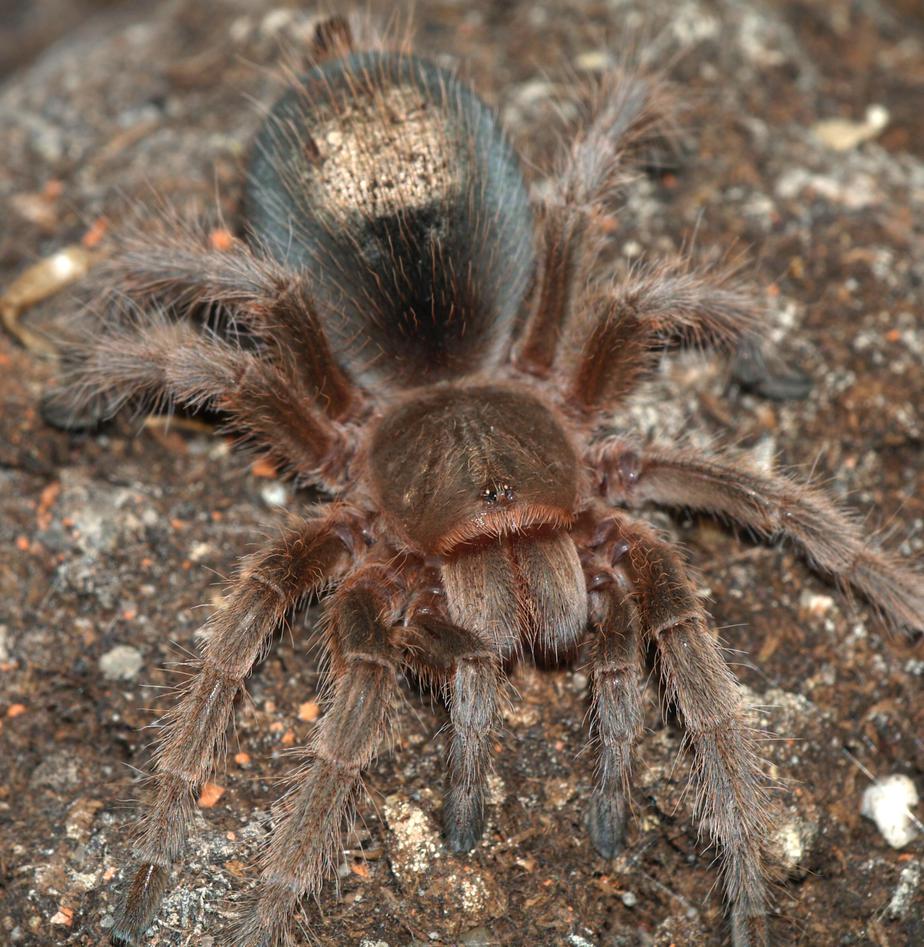
Like most of the spiders on this list, the Chilean Rose Tarantula was named for its physical appearance, which includes rose-colored hair. Also like the other spiders on this list, female Chilean Rose Tarantulas make excellent pets because they live so long (between 15 to 20 or more years). Unfortunately, like other male spiders, male Chilean Rose Tarantulas die not long after mating.
Chilean Rose Tarantulas like to hunt at night and feed on invertebrates and small vertebrates like mice, frogs, and lizards. Unlike smaller spiders, which have a more potent venom, Chilean Rose Tarantulas (like nearly all tarantulas) use their size rather than their weaker venom to take down their prey.
Did You Know?
While the Chilean Rose Tarantula is relatively calm, it can become rather aggressive if its handled too much by a pet owner.
6. Chaco Golden Knee
Average Lifespan: Females – 20 to 25 years; Males – 5 to 10 years
County of Origin: Parts of Argentina and Paraquay
Scientific Name: Grammostola pulchripes
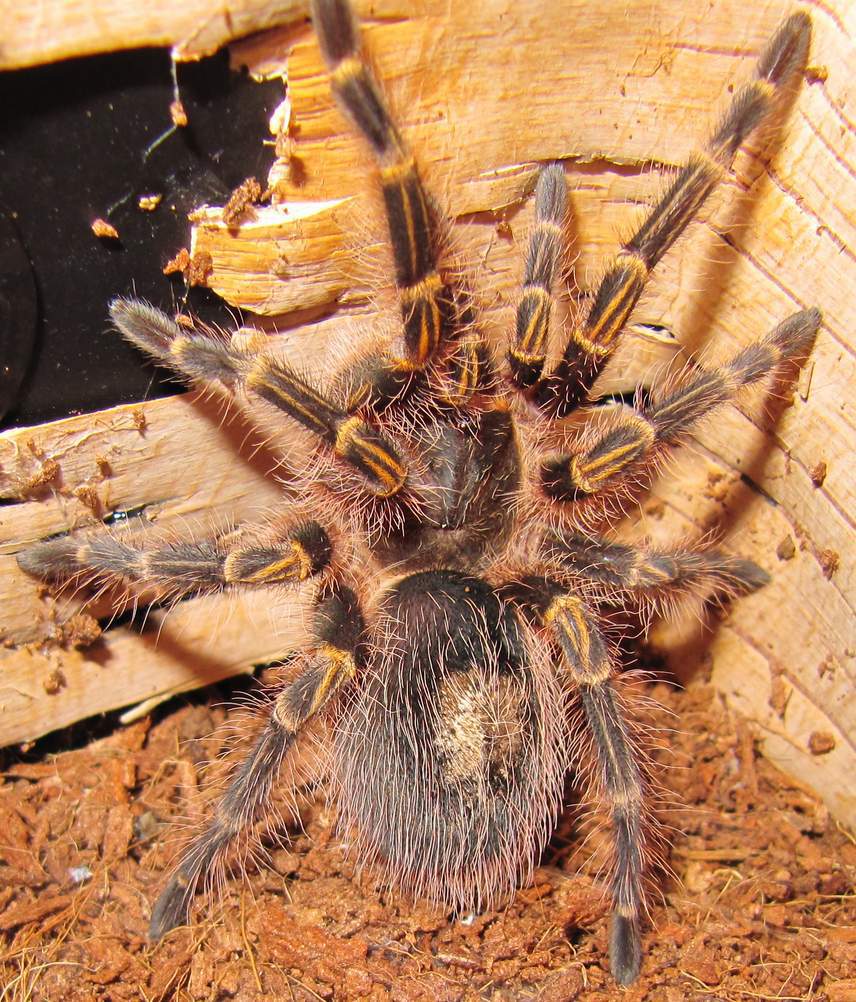
The Chaco Golden Knee Tarantula is one of the larger species of spider and can grow up to 8.5 inches (20 to 22 centimeters) as an adult. Like all of the spiders on this list, only female Chaco Golden Knee Tarantulas have a long lifespan. They can live between 20 to 25 years while male Chaco Golden Knee Tarantulas have a lifespan half as long (5 to 10 years).
Chaco Golden Knees are native to Argentina and Paraquay, but are a popular pet around the world, especially in the United States. According to arachnid pet owners, Chaco Golden Knees are a great spider for beginners. While they have a calm attitude, Chaco Golden Knees are aggressive eaters, making it fun for pet owners to watch.
Did You Know?
Another characteristic that makes the Chaco Golden Knee Tarantula a popular pet is that while it does burrow like other tarantulas, it often enjoys sitting out in the open parts of its habitat.
5. Brazilian Black Tarantula
Average Lifespan: Females – 20 to 30 years; Males – 4 to 6 years
County of Origin: parts of Brazil and Uruguay
Scientific Name: Grammostola pulchra
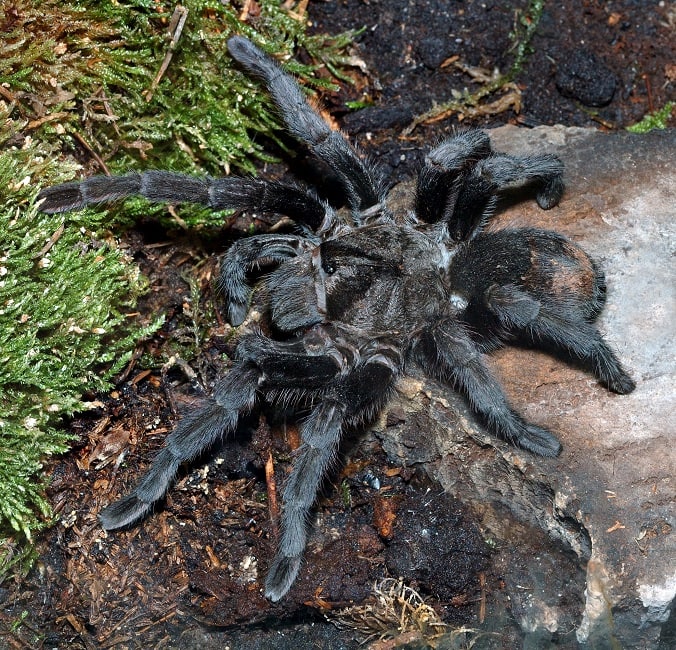
The Brazilian Black Tarantula is covered in velvety jet black hairs, has a pretty laid back nature, and the females of this species have a long lifespan – this makes the Brazilian Black one of the most popular arachnid pet. Female Brazilian Black Tarantulas have a lifespan of 20 to 30 years while the males only live between four to six years.
Unlike other tarantulas, the Brazilian Black Tarantula grows very slowly. It takes about four to eight years for a Brazilian Black Tarantula to reach adulthood.
Did You Know?
Brazilian Black Tarantulas can eat prey almost double their size, including small mammals and reptiles like mice and lizards.
4. Mexican Red Knee Tarantula
Average Lifespan: Females – 25 to 30 years; Males – no more than 10 years
County of Origin: Pacific Coast of Guerrero, Mexico
Scientific Name: Brachypelma smithi
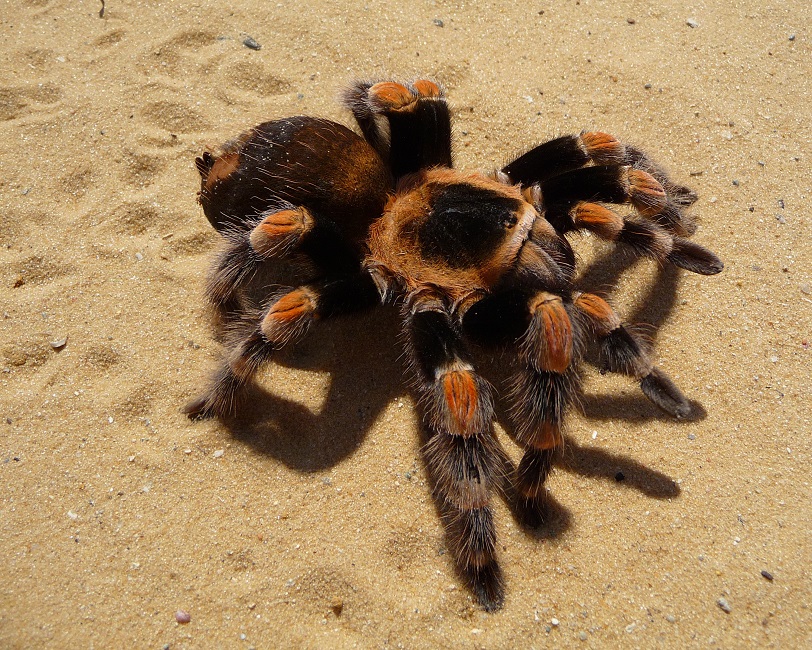
Mexican Red Knee Tarantulas are another popular pet because of their good looks (they are mostly black and dark brown with vibrant orange/dark red joints) and docile temperament. Additionally, like all the spiders on this list, female Mexican Red Knee Tarantulas can live for several decades when well cared for.
Like all tarantulas, Mexican Red Knees are quite large and can range in size from 5 inches (12.7 centimeters) to 5.51 inches (14 centimeters). The females are larger than the males and take longer to reach maturity; it takes females six to seven years to become adults and four to five years for male Mexican Red Knee Tarantulas.
Did You Know?
In the wild, Mexican Red Knee Tarantulas like to make their burrows in rocky areas at the base of thorny plants like cacti.
3. Texas Tan Tarantula
Average Lifespan: Females – up to 40 years; Males – up to 2 years after reaching maturity
County of Origin: Southern Texas, USA and Northern Mexico
Scientific Name: Aphonopelma anax
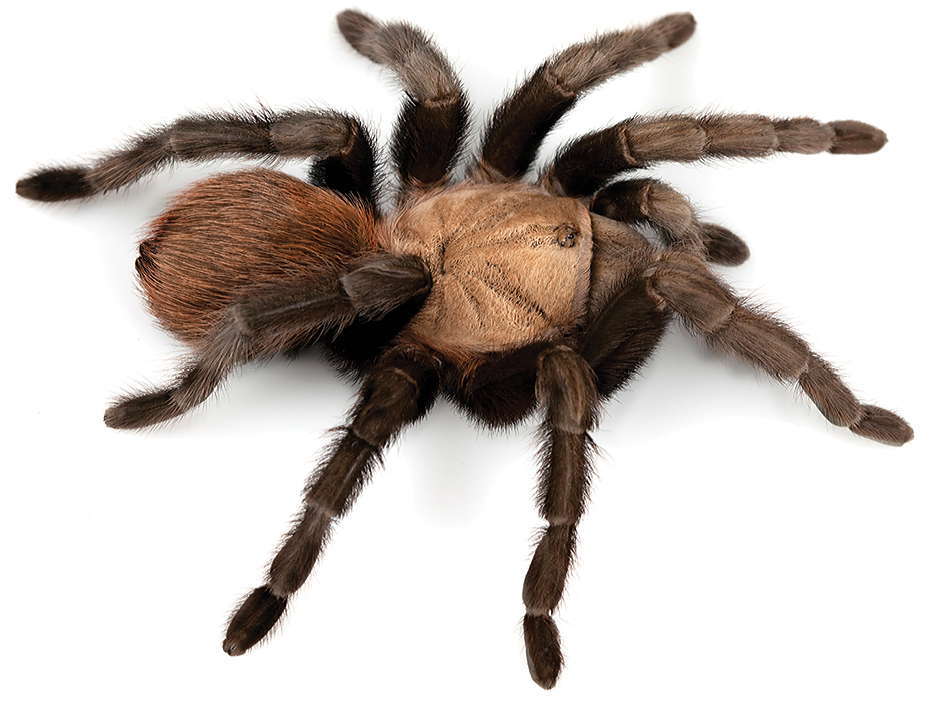
The Texas Tan Tarantula is, as its name suggests, native to Southern Texas as well as Northern Mexico. Like most large spider species, female Texas Tan Tarantulas have a significantly longer lifespan than the males. After male Texas Tan Tarantulas reach sexual maturity, it is rare for them to live for more than two years. On the opposite end, female Texas Tan Tarantulas can live over 10 times longer, with some specimens reaching 40 years of age.
Despite their intimidating looks, the Texas Tan Tarantula is a pretty docile spider and is a very desirable pet. However, like any animal, if a Texas Tan Tarantula senses a threat, it will use its hind legs to kick off some of its hairs, which can cause skin irritation to humans, towards the threat.
Did You Know?
The Texas Tan Tarantula is one of the largest spider species in the United States, with females reaching a leg span of up to 6 inches (15.24 centimeters) and males up to 5 inches (12.7 centimeters).
2. Oklahoma Brown Tarantula
Average Lifespan: Females – up to 40 years; Males – up to 2 years after reaching maturity
County of Origin: Southern United States (Colorado, Kansas, Missouri, New Mexico, Oklahoma, Arkansas, Texas, and Louisiana); and northern parts of Texas
Scientific Name: Aphonopelma hentzi
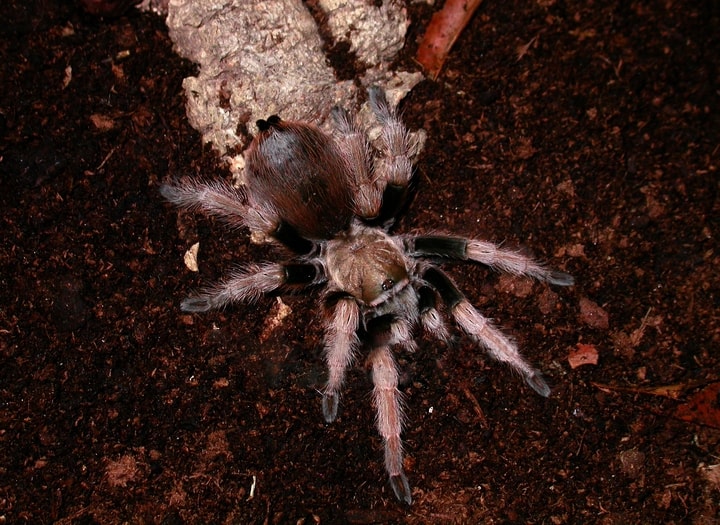
Not to be confused with the similar Texas Tan Tarantula, the Oklahoma Brown Tarantula (also commonly called the Texas Brown Tarantula or Missouri Tarantula) has a wider distribution across the Southern United States and tends to be a little smaller than its tan cousin. However, the Oklahoma Brown Tarantula does have a similar lifespan to the Texas Tan, with the females living up to 40 years, while the males only live a few short years.
Oklahoma Brown Spiders can grow up to 4 inches (10 centimeters), including leg span, and weigh up to 3 ounces. These long-lived tarantulas have dark chocolate brown bodies and legs with lighter reddish brown hairs.
Did You Know?
The Oklahoma Brown Tarantula is the only tarantula species native to Missouri and is the state’s largest spider.
1. Armored Trapdoor Spider
Average Lifespan: Females – 20 to 43 years; Males – 5 to 7 years
County of Origin: Western Australia
Scientific Name: Gaius villosus
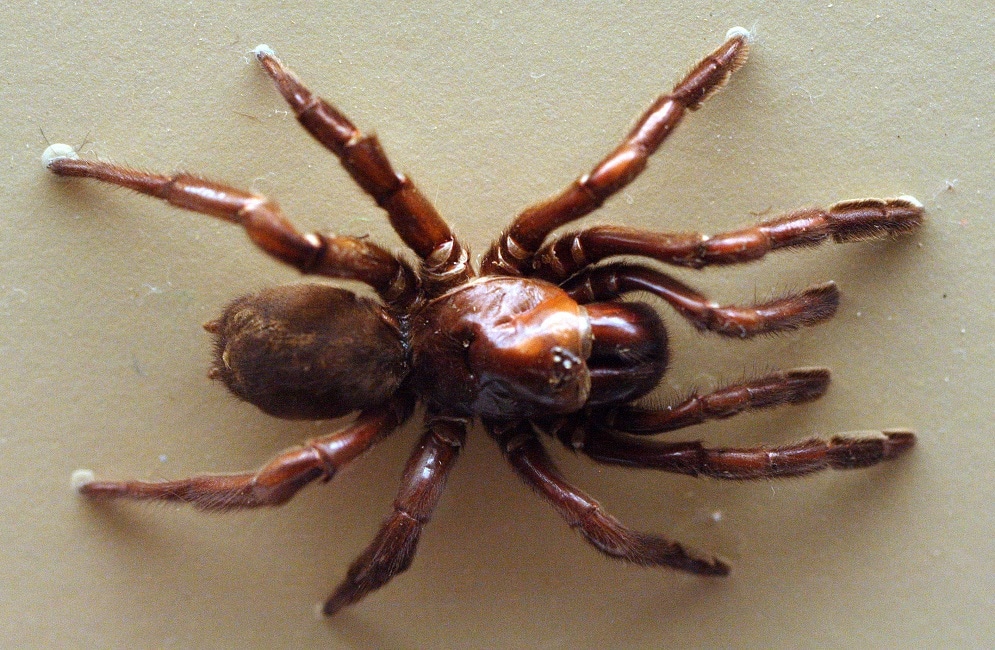
In the Fall of 2016, the scientific community was saddened to learn that the oldest spider in the world had died. The remarkably long-lived spider was a female Gaius villosus or an armored trapdoor spider who was 43 years old when she died. The only reason that the spider’s (named Number 16) precise age was known was because she had been studied in her natural habitat of Western Australia since she was born in 1974.
Arachnologist Barbara York Main had observed Number 16 as a spiderling and saw her establish a burrow at the study site. Main went on to catalogue Number 16 and about 100 other spider burrows over the next 40 years. Unfortunately in 2016, researcher Leanda Mason, who had taken over Main’s work as she had become to old to work in the field, noticed that Number 16’s burrow was a mess and that the spider was missing. Mason believes Number 16 was killed by a parasitic spider wasp.
Did You Know?
While male Gais villosus leave their burrows for good when they reach sexual maturity around age 5, female Gais villosus, like Number 16, live and guard the same burrow for the rest of their lives.











